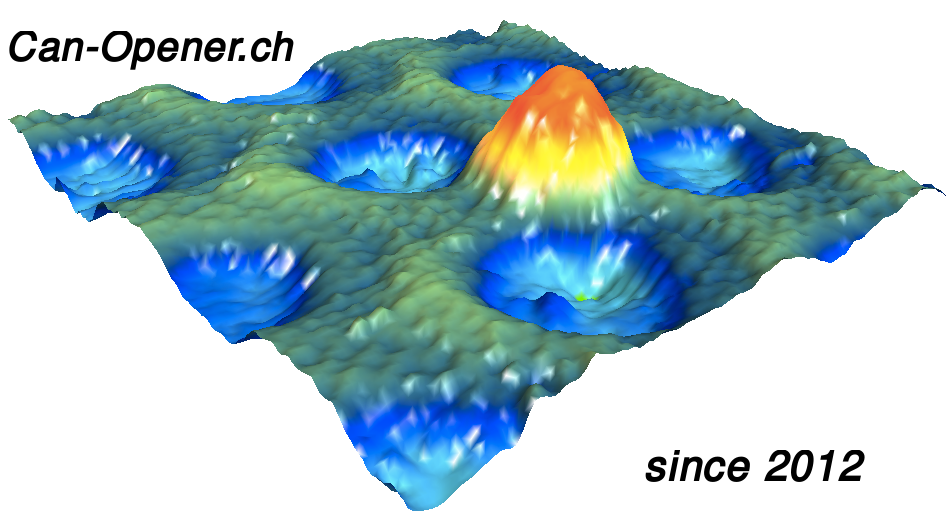The can-opener effect produces nanometer-sized holes in single layer hexagoal boron nitride or graphene. It was discovered by the
Surface Physics group at the University of Zurich in 2012 [
Cun et al., NanoLetters 13, 2098 (2013)] (
article).
After exposure of a single layer of h-BN on rhodium (nanomesh) to low-energy ions, annealing of the surface leads to the cut-out of 2 nm-sized h-BN flakes.
This peculiar effect opens new avenues for the functionalisation of
sp2-hybridised single sheets of h-BN or graphene.

